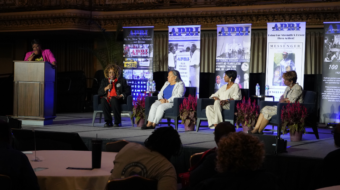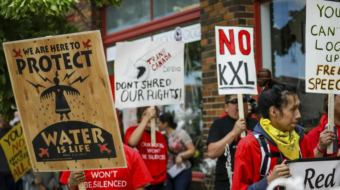Editor’s note: Excerpted from report to CPUSA National Committee November 13, 2009.
The current struggle for health care reform gives us a concrete glimpse of the contours, dynamics, and complexities of the issue.
It has been a pitched battle. At one point there appeared to be a crack in the Republican edifice when Olympia Snowe voted to move the bill out of the Senate Finance Committee, but she quickly backpedaled when Majority Leader Harry Reid raised the issue of a public option.
On the other side of the aisle, nearly all the Democrats favor reform, though they quarrel over its nature.
Across the country a movement is charging forward. Early on the mobilization was inadequate, but that changed, thanks to the so-called tea parties that were a wakeup call for many who were enjoying the afterglow of the 2008 elections and underestimated what it would take to consolidate and extend that victory.
All sides in this struggle have gone to great lengths to frame the debate and shape public opinion. In the early going the right had some success with its fear mongering – talk of death panels, socialism, Nazism, etc. – but that changed as health care supporters answered the challenge.
While many sections of labor favor a single payer system, they have avoided painting themselves into a corner. Instead they have stated their support for single payer while battling for the inclusion of the public option, and greeted the House bill with enthusiasm.
While labor differed with the Obama administration on some matters, it has done so in a thoughtful, respectful and unifying manner. It has not sought to score points, demonstrate superior wisdom, or expose Obama as a ‘do-nothing centrist.’
Other organizations of the popular movement – NOW, the NAACP, National Council of La Raza – as well as many of the health care organizations and coalitions take much the same approach.
The passage of the legislation by the House constitutes an important victory for comprehensive health care reform and progressive change generally. If the bill had been defeated, we would not be simply back to square one, as some suggest.
Rather, health care reform would be off the agenda, indefinitely. Political momentum would shift to the right wing, and prospects would be bleak for a second stimulus, Employee Free Choice, climate change legislation, immigration reform, and other key battles.
Some left and progressive people dismiss this danger, but politics is not only about passing laws, as important as that is – it is also about gaining and maintaining the initiative, building on victories no matter how small, and expanding the breadth and depth of the coalition at every opportunity. It’s higher math, not elementary addition and subtraction.
The health care reform fight is not over, of course, since the Senate has yet to act and the balance of power is less favorable there. Still, the House vote gives fresh impetus to the broader movement to bring its weight to bear on Senate deliberations and then on to the reconciliation process where the bill can be improved, including through deletion of toxic elements like the Stupak amendment that would curtail access to abortions.
The health care reform movement has to “keep the pedal to the metal.” All kinds of actions are planned over the next month, from congressional lobbying to “thank you parties” for those who have supported reform, to phone banking to influence the Senate vote. Everyone should be a part of this.










